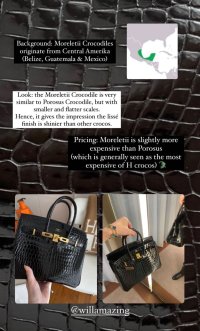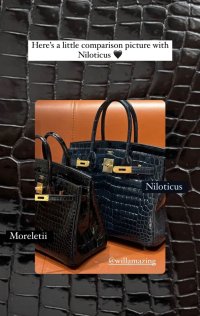I posted about this in another thread, but thought it may be nice to make a more organised, fleshed out post here about the evolution of some of the metals and finishes used for Hermès hardware. Everything will be sorted into semi-arbitrary eras.
1800s to mid-1980s:
*
Solid Brass— The original Hermès hardware was solid brass. Solid brass is often confused with gold plated hardware, which was not yet introduced during this era.
*
Brushed Brass— Brushed brass hardware was the precursor to the brushed gold and palladium hardware we have today. It is extremely rare to see, so I suspect it was available solely for S.O.
*
Guilloché— Though I do not believe it was used for Kellys during this time, brass guilloché hardware was available for other bags.
*
Diamond— Diamond hardware has been available at Hermès since at least the mid-1980s. The diamonds would be set in solid gold. Two things to note here: first, this would have been available almost exclusively for Kellys. Second, this version of diamond hardware did not look like current versions of diamond hardware with stones covering the hardware on the sangles. Diamonds would have been present on the touret and lock.
mid-1980s to 1990s:
*
Gold Plated Brass— Arguably the most classic and popular version of Hermès hardware, gold plated hardware replaced solid brass in the mid-1980s.
*
Palladium Plated Brass— Palladium plated hardware was introduced in the 1990s.
*
Brushed Palladium— Brushed palladium hardware was introduced in the late 1990s.
2000s-2010:
*
Ruthenium— Ruthenium hardware was introduced in the early aughts.
*
Guilloché— Guilloché hardware was finally introduced to Birkin and Kelly lines in the early aughts.
*
Permabrass— Permabrass hardware was released in the aughts, but it was not widely available for Birkins or Kellys until the 2010s.
*
”PVD” (Physical Vapor Deposition)— PVD treated hardware was introduced in 2010 for Gaultier’s So Black collection.
2010-present:
*
Rose Gold Plated Brass— Rose gold plated hardware was introduced in 2018 for bags (bar Kellys).
*
Monochrome— Influenced by the So Black collection from 2010, two new monochrome hardware options were introduced in the early 2020s— monochrome green and monochrome pink. There was also a new, improved iteration of So Black monochrome hardware introduced during this time. You may see monochrome green and pink referred to as “So Green” and “So Pink”. You may also see the new version of “So Black” referred to as “Ultra Black”.
Note: As always, all information is based on my own knowledge and research. One hardware which I have not been be able to confidently place is Brushed Gold hardware. I have personally seen this hardware used as early as the 2000s, but would love to hear if anyone has seen examples of it from before then. Please feel free to add on or let me know if I am missing anything!









